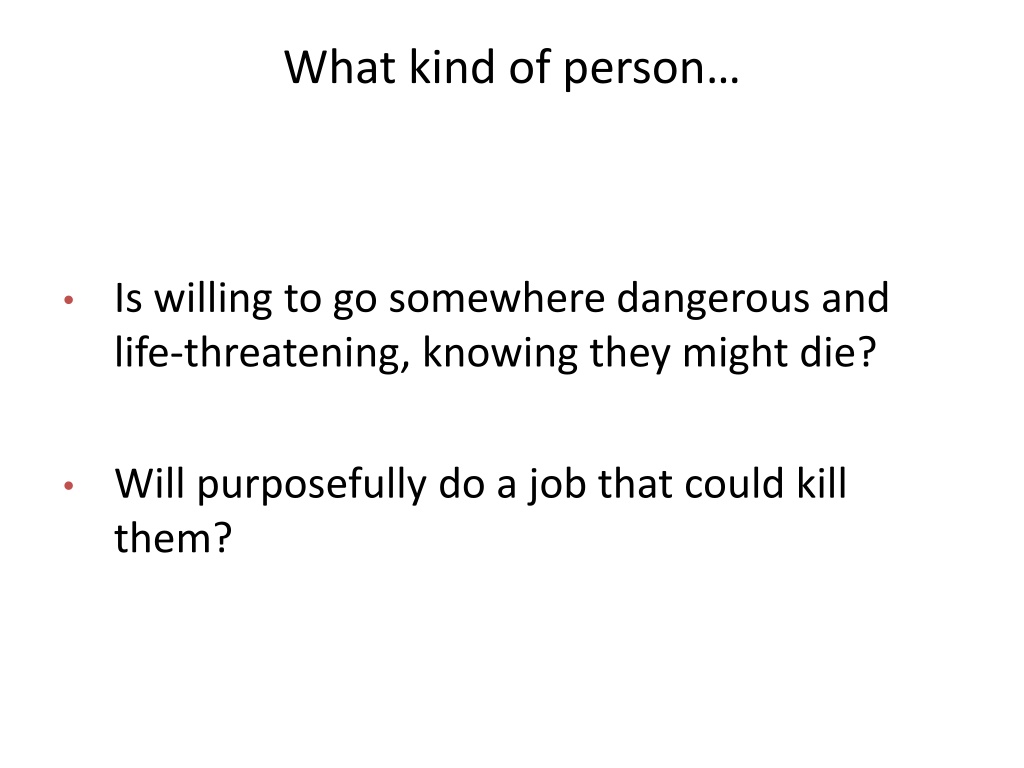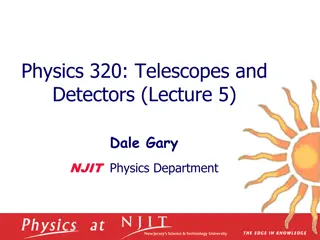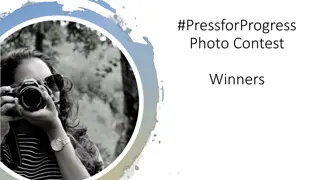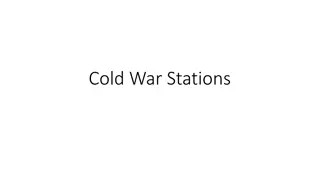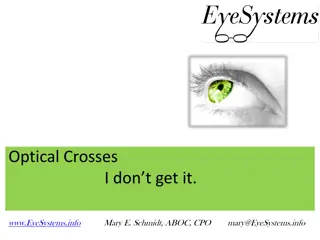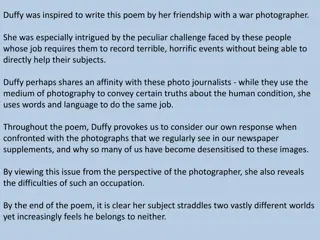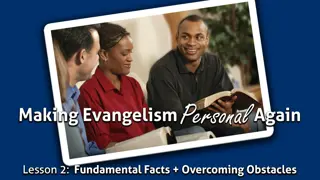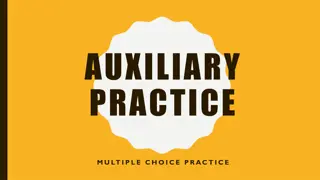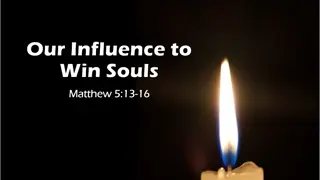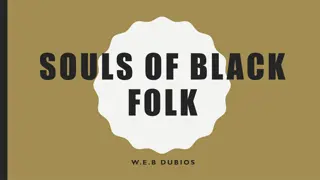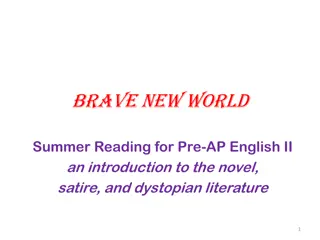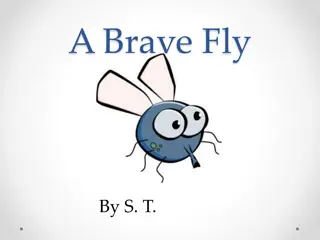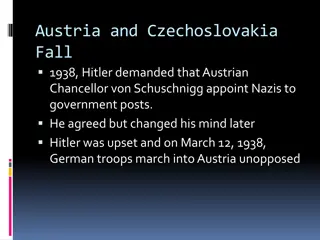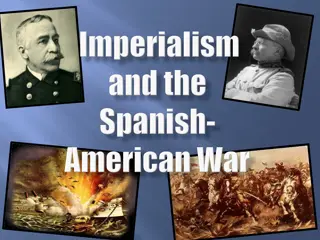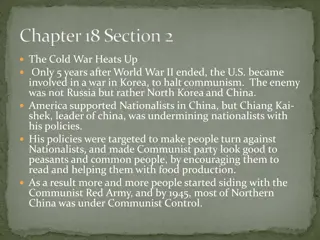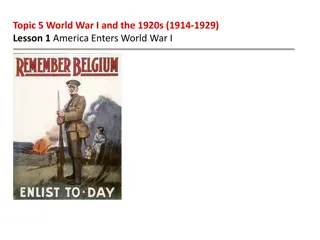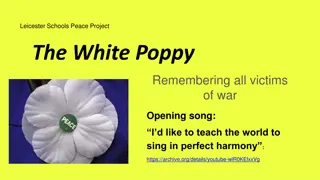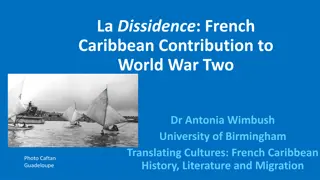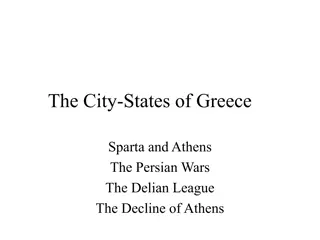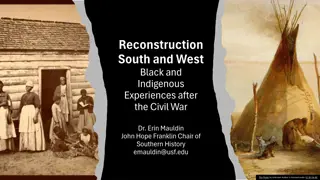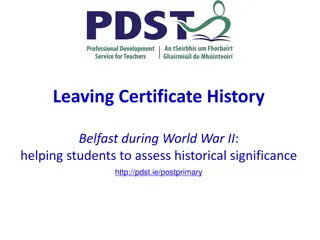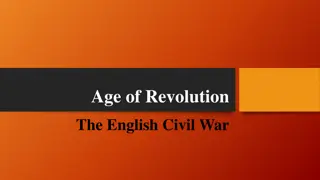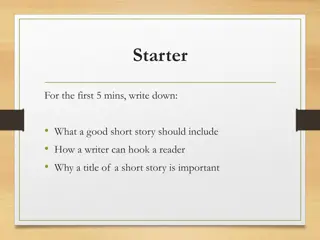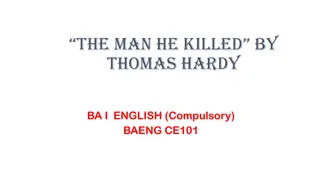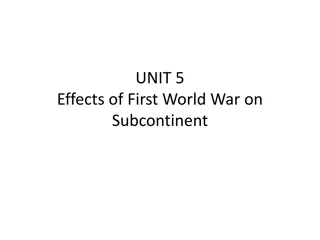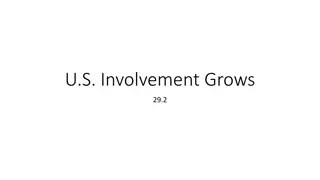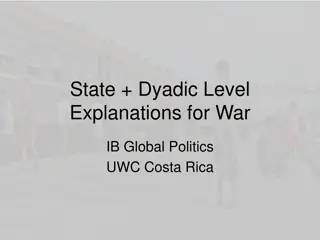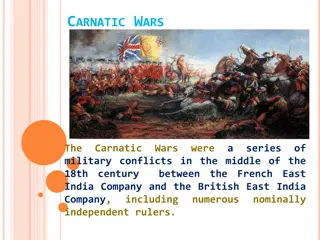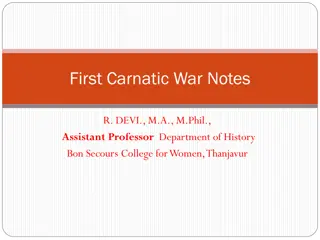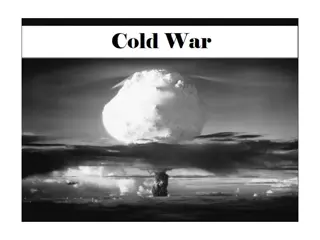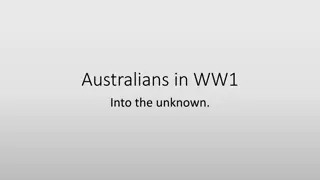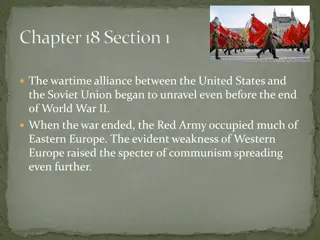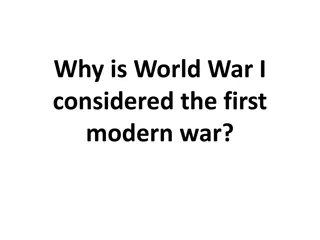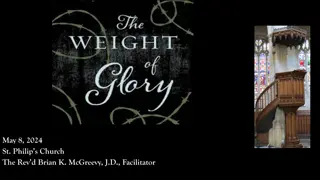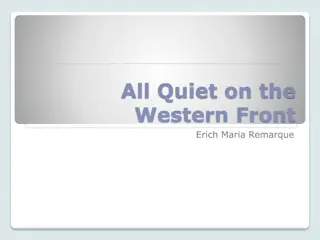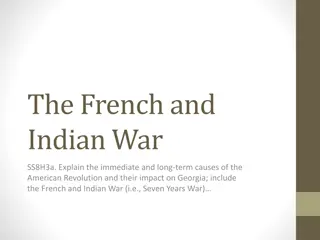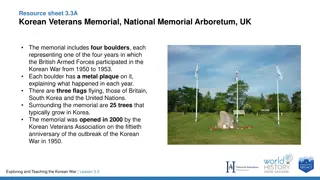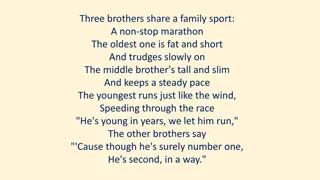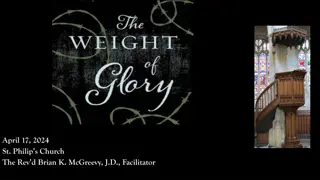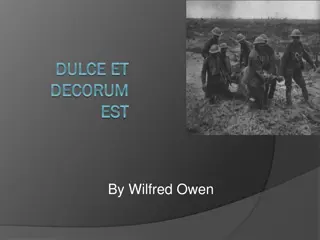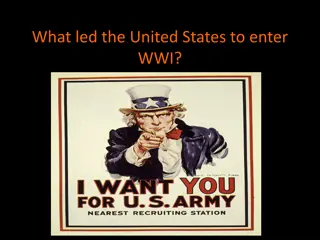The Brave Souls Behind the Lens: War Photographers
War photographers risk their lives to capture the horrors of war, allowing the world to witness distant conflicts. Inspired by the work of Don McCullin and Philip Jones Griffiths, Carol Ann Duffy explores the sacrifices and choices these photographers make in her poem. Join us in delving deep into the first stanza as we unravel the emotions and dilemmas faced by these courageous individuals.
Download Presentation

Please find below an Image/Link to download the presentation.
The content on the website is provided AS IS for your information and personal use only. It may not be sold, licensed, or shared on other websites without obtaining consent from the author. Download presentation by click this link. If you encounter any issues during the download, it is possible that the publisher has removed the file from their server.
E N D
Presentation Transcript
What kind of person Is willing to go somewhere dangerous and life-threatening, knowing they might die? Will purposefully do a job that could kill them?
The photos we see on newspaper front pages, in Sunday supplements, on the news or in magazines, are taken by real people. These people place their lives in danger, to help us the public- visualise the horrors of war elsewhere; wars not on our doorstep. These people are War Photographers.
What was Duffys inspiration? The poem comes from Carol Ann Duffy s friendship with Don McCullin and Philip Jones Griffiths, two well-respected stills photographers who specialised in war photography. Duffy is fascinated by what makes someone do such a job and how they feel about being in situations where a choice often has to be made between recording horrific events, and helping.
Exploring the Poem We are going to explore the first stanza of the poem together, then you will be allocated to a group and a stanza to analyse in as much depth as possible before feeding back to each other in your groups.
Contrast to what? Sibilance what is the effect? What are the connotations of the colours? In his darkroom he is finally alone with spools of suffering set out in ordered rows. The only light is red and softly glows, as though this were a church and he a priest preparing to intone a Mass. Belfast. Beirut. Phnom Penh. All flesh is grass. 1. regularity/order reflects structure 2. Suggestion of graves/bodies Isaiah 40:6 Bible. shortness of life conveyed but ironically sounds peaceful Simile devotion to the pictures, he has escaped but the victims can t. Literal or list of horror; what is the effect of the caesura?
Ambiguity chemicals/solutions to war (there are no solutions) Alliteration conveys evil he s witnessed He has a job to do. Solutions slop in trays beneath his hands which did not tremble then though seem to now. Rural England. Home again to ordinary pain which simple weather can dispel, to fields which don t explode beneath the feet of running children in nightmare heat. Why did they not tremble then? Why now? CONTRAST to war zones - suggests peaceful, idyllic life Contrast: barefoot children running in grass for fun/those running from war end of innocence and, possibly, life. He is affected emotionally too. True meaning to the poem. Is he a hero? Cannot compare to pain of war
Ambiguous: Literal developing the photo. Figurative person in pain Something is happening. A stranger s features faintly start to twist before his eyes, a half-formed ghost. He remembers the cries of this man s wife, how he sought approval Without words to do what someone must and how the blood stained into foreign dust. Metaphor 1. image on photo, 2. death Photographer s dilemma has a job to do. His duty to report on the crimes of war. He s haunted by the past.
1. Photo 2. Good/evil right/wrong 3. Truth/lies Trivialises; we are only moved momentarily Contrast to war zone readers wash away the truth A hundred agonies in black-and-white from which his editor will pick out five or six for Sunday s supplement. The reader s eyeballs prick with tears between the bath and pre-lunch beers. From the aeroplane he stares impassively at where He earns his living and they do not care. Chooses photos to suit the article; don t convey the full horror of war Leaving to another assignment; poem is cyclical; unceasing wars Who are they? Suggests they are used for entertainment Criticises us, the reader
Structure 4 stanzas 6 lines per stanza Regular rhyme scheme ABBCDD Rhyming couplets end each stanza EFFECT ? Creates order in the chaos of war Like the photographer ordering the photos, making sense of the chaos The couplets help to create a serious moral message about the crimes of war Our understanding of the photographer and the poet s message develops just as the photos develop
How does Duffy try to make us relate to/understand overseas conflicts?
Point It can be difficult for us to relate to suffering in faraway countries and so to make us feel angry and guilty about it, Duffy has to use some disturbing and powerful images, images we would rather not think about, or really see. She says...
Evidence to support 'Fields which don't explode beneath the feet Of running children in a nightmare heat.
Explanation/Analysis This image is effective because we would normally think of 'running children' in 'fields' as an image of fun. We also associate children with innocence, and the idea of them being hurt brings out our protective instincts. Duffy does not tell us what these children are running from, some kind of 'nightmare heat', leaving it up to us to imagine our worst fears. In effect, this image is what happened before the images we have all seen on our TV's of children badly burnt, without legs or arms. We know while they are 'running' what will happen to them.
FOCUS ON IMAGERY: In small groups, select one of the following and create a short analytical paragraph, applying the PEE principle. Maximum 10 minutes. how the blood stained into foreign dust a hundred agonies in black-and-white A stranger s features faintly start to twist before his eyes, a half-formed ghost. The reader s eyeballs prick/ with tears between the bath and pre-lunch beers
What are YOUR thoughts? You are now going to discuss and reflect on the ideas that you gathered through our analysis of WarPhotographer . As you are doing so, think about: -what did you find to be the most interesting key words/phrases? Why? -what ideas did your group come up with that you found the most interesting and why? -Were there any ideas that were brought up that you were unsure of, or had a different opinion on? If so-why? Can your partner offer an interpretation?
